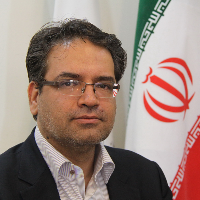Explaining the Role of Spatial Configuration in Promoting Place Attachment in Informal Settlements, (Case study: Nokhodchar neighborhood of Rasht)
Creating a context for a sense of belonging to a place and strengthening the practical criteria for increasing the quality of life in informal settlements adds to the necessity of evaluating this issue and recognizing the factors that strengthen it. In this regard, this research with analytical description and review methods of texts, sources, and visual documents in library studies and case research method, recognizes the factors involved in creating a sense of belonging in such settlements and also the effects of spatial configuration changes in enhancing the potential sense of belonging in Nakhodcher neighborhood of Rasht city. The quantitative results obtained from the distribution of 384 questionnaires have been analyzed by the structural model method. This method is used to investigate the effect of a significant relationship between the factors of sense of belonging in this neighborhood and it examines the correlation of variables, which is one of the prerequisites for doing regression. The research findings from the questionnaire show that there is a significant positive relationship between the effective factors in the formation of the sense of belonging, including perceptual-cognitive, environmental-physical, and socio-cultural factors; So that by increasing the parameters of spatial configuration such as the length of passages, interconnectedness, depth, connection, and selection, the quality of the sense of belonging factors mentioned above will also increase. Summarizing the conditions obtained by Depth map software and space layout indicators shows that the minimum value of the connection index in the network of passages of the fabric of the Nakhodcher neighborhood indicates the minimal permeability of the fabric and its organicity. To strengthen the dynamics of this area, the average depth of the entrances of the neighborhood should be kept to a minimum and different uses should be established in the vicinity of the main axis.
-
Assessment of Ecological Quality and the Impact of Urban Green Streetscapes on the Quality of the Urban Environment (A Case Study of Shohada Street, Kermanshah)
*, Behdad Beyranvand Nezhad, Farshid Aram, Nasim Alizadeh
Journal of Urban Structure and Function Studies, Autumn 2025 -
Framework for the Organization and Management of Historic Urban Landscapes; A Case Study of Mashhad, Iran
Masoud Alavian Sadr, Mohammadsaeid Izadi*, Pouyan Shahabian, Mohammadhassan Talebian
Athar Journal, -
Game theory, a new approach to solving conflicts between stakeholders in the process of urban regeneration
Zeinab Baziar*, Behzad Malekpour Asl, Mohammadsaeed Izadi
Interdisciplinary studies in architecture and urbanism development, -
The impact of vegetation on urban heat island reduction in the city of Karaj
Fatemeh Ghorbanileylestani, *
Motaleate Shahri,




